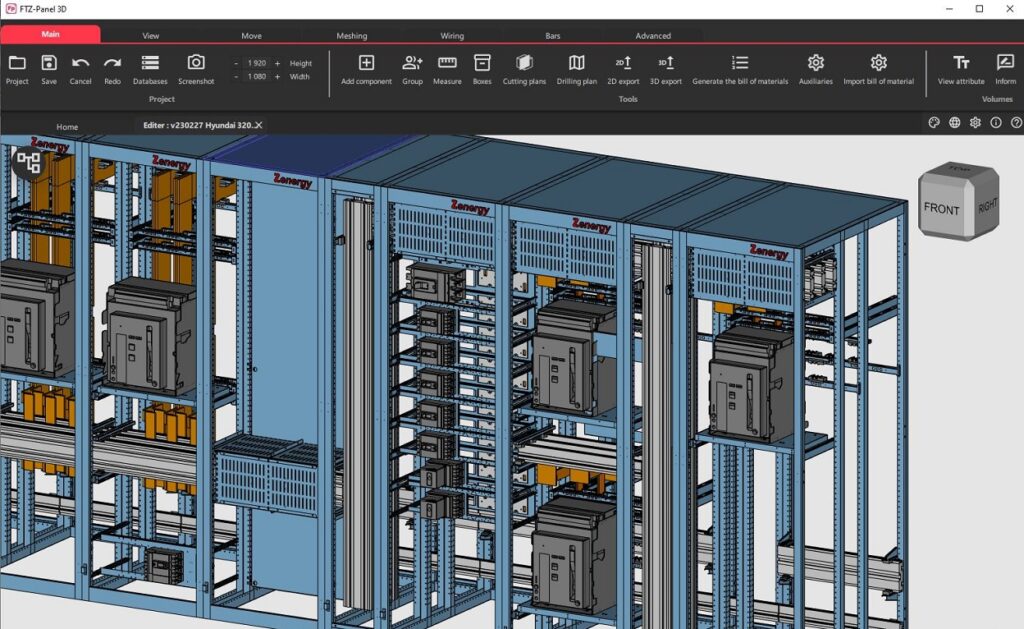Why use software dedicated to electrical cabinets?

The study of electrical cabinets is a key part of the study of an electrical and automation installation.
It can also include the design of low and medium voltage switchboards or cabinets, the creation of a Shelter or the mechanical part of a machine.
The process of designing these cabinets requires a precision and specificity that general 3D mechanical CAD software can’t always offer, or requires a great deal of time.
This article explores the reasons why it is preferable to use software dedicated to electrical cabinets rather than 3D mechanical CAD software such as SolidworksTM, CatiaTM, CreoTM, Autocad 3DTM, SolidEdgeTM, …
We can divide this argument into 2 parts:
- Diagram/cabinet links
- Cabinet-specific functions
Link diagram <-> enclosure
The design of an electrical installation often begins with the creation of a schematic file including distribution, control/command, power, PLC and other drawings.
This study is often carried out using specialized software that manages the complex aspects of electrical design (schematics, numbering, terminal blocks, cross-referencing).
The study also associates component references with the various symbols. These references are linked to volumes that act as a “bridge” between the electrical diagram and the cabinet layout. This makes it possible to “navigate” between the schematic and the cabinet for better legibility.
This link can also be replaced by the direct integration of a list of components and volumes, taken from a costing for example.
Special cabinet functions
A software package dedicated to electrical enclosures provides business functions that facilitate design and deliver more complete documents.
The following automatic functions are just a few examples of what can be achieved in record time:
- selecting the right enclosure size
- layout of rails, bars and trunking
- layout the various electrical components
- define wire and cable routing and lengths
- extract documents for manufacturing: sectional drawings, drilling plans, copper bar drawings, parts lists, etc.
- complete a previously designed cabinet
- compatible with mechanical part
Conclusion
In short, the use of software dedicated to electrical enclosures offers many advantages over general 3D mechanical CAD software. This specialized tool offers dedicated functionalities, significant time savings during the design phase, improved compliance with standards, reduced errors and complete documentation for all departments, including the workshop. It defines the true digital twin of your electrical cabinets, while remaining compatible with the STEP format.
More information on our FTZ-Panel 3D electrical cabinet solution
